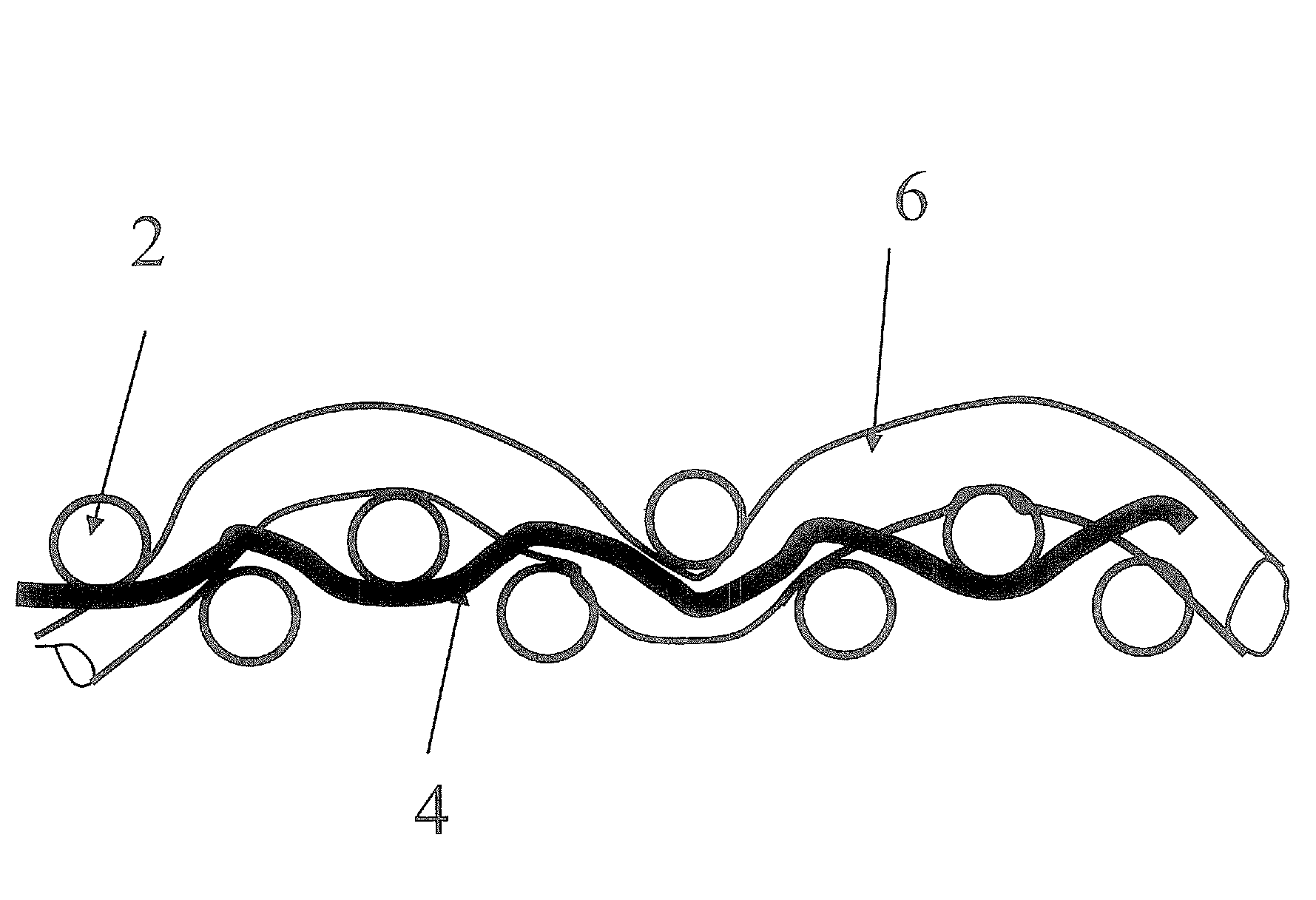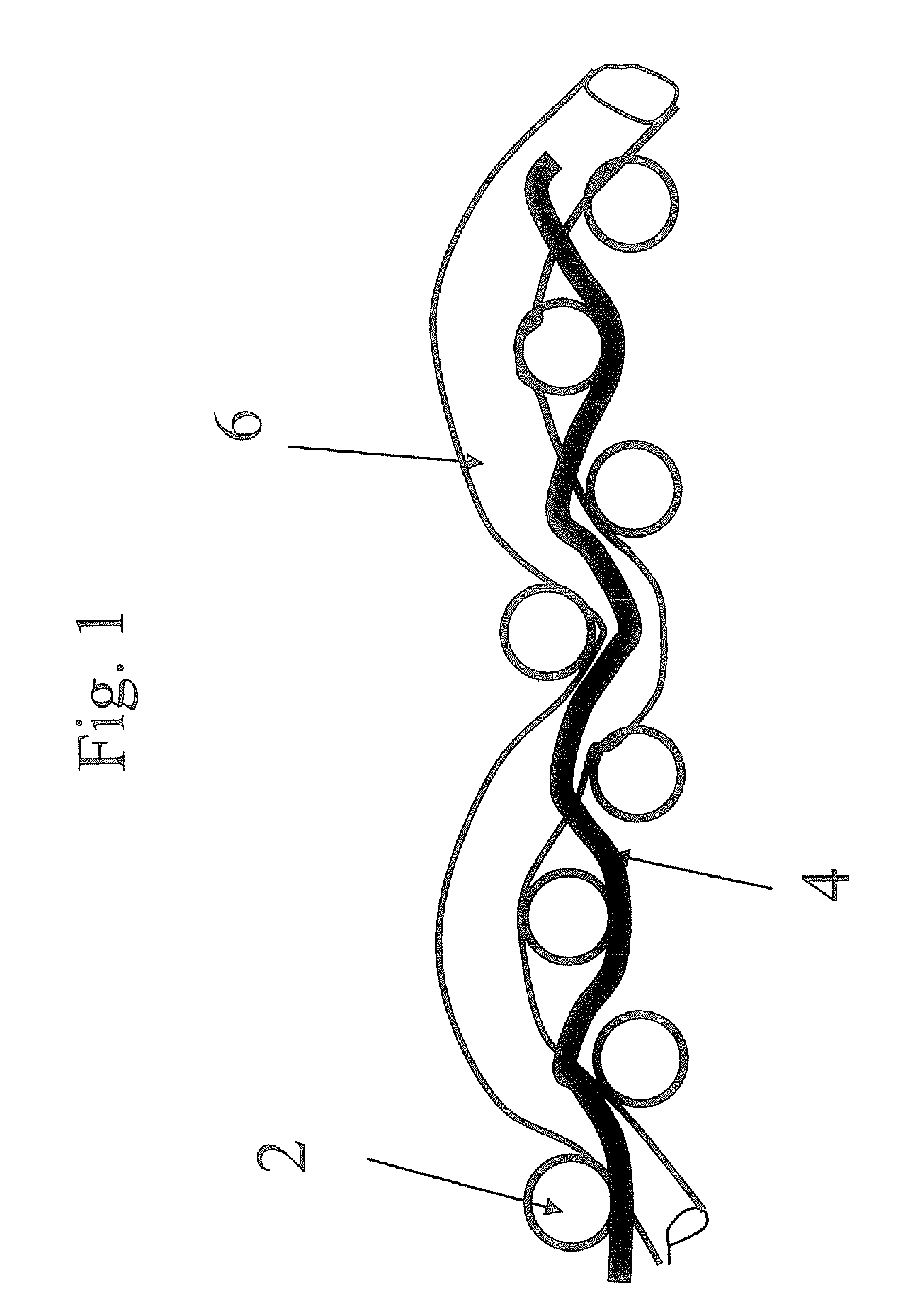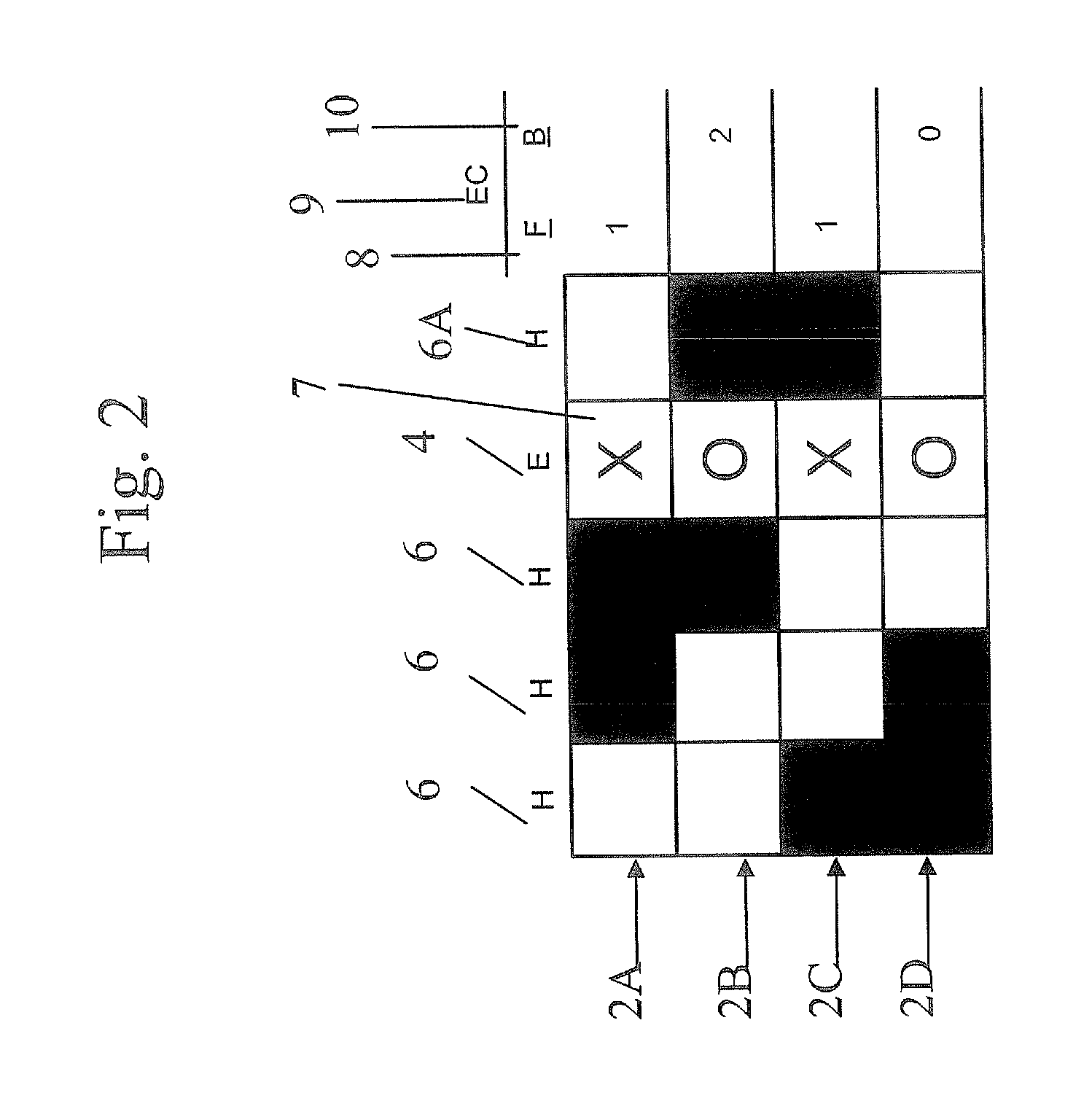Stretch wovens with separated elastic yarn system
a technology of elastic yarn and stretch woven fabric, which is applied in the field of stretch woven fabric manufacturing, can solve the problems of reducing textile production efficiency during the processing of elastic yarn, affecting the appearance and performance of fabric, and many textile processes are difficult to conduct, so as to achieve easy processing, low shrinkage, and the effect of friendly garment making
- Summary
- Abstract
- Description
- Claims
- Application Information
AI Technical Summary
Benefits of technology
Problems solved by technology
Method used
Image
Examples
example 1
Bi-Stretch Denim with 3 / 1 Core Yarn Pattern
[0099]The warp surface yarn was 7.0 Ne count and 8.4 Ne count mixed open end yarn. The warp yarn was indigo dyed before beaming. The core warp yarn is 100 / 2 Ne Siro core spun yarn with 40 D LYCRA® spandex. The weft yarn was 12 Ne cotton with 55 D LYCRA® core spun yarn. LYCRA® draft is 3.6×. Loom speed was 500 picks per minute at a pick level 41 Picks per inch. Warp core yarn use 1 down and 3 up weave pattern. It uses a match pattern as well (FIG. 9). Table 2 summarizes the test results. The test results show that after washing, this fabric had weight (13.9 OZ / Y2), 13.3% and 24.9% stretch, 3.8% and 4.3% growth in warp and weft respectively. All these data indicate that this combination of core stretch yarn and surface hard yarn and fabric construction can produce good fabric stretch and growth. Fabric has no grin-through; core warp yarn cannot be seen from both surface and back.
example 2
Bi-Stretch Denim with 2 / 2 Core Yarn Pattern
[0100]This sample had the same fabric structure as in example 1. The only difference was the use of 2 up and 2 down weaving pattern for warp core elastic yarn. The warp surface yarn was 7.0 Ne count and 8.4 Ne count mixed open end yarn. The warp yarn was indigo dyed before beaming. The core warp yarn is 100 / 2 Ne Siro core spun yarn with 40 D LYCRA® spandex. The weft yarn was 12 Ne cotton with 55 D LYCRA® core spun yarn. The loom speed was 500 picks / minute at 41 picks per inch. Table 2 summarizes the test results. It is clear that this sample had good stretch (warp 12.3%×weft 25.7%). And 53.3 inch of width. The fabric also has low shrinkage. So a heatset process was not necessary for this sample. Without heatset, fabric appearance and handle were improved.
example 3
Bi-Stretch Denim with 1 / 1 Core Yarn Pattern
[0101]This fabric used the same warp and weft yarn as Example 1 and Example 2. Also, the weaving and finishing process were the same as Example 2 and 3, but its weave pattern for elastic core warp yarn was 1 / 1 plain (FIG. 4). Table 2 summarizes the test results. We can see that this sample had weight (13.8 Oz / Ŷ2), good stretch (warp 12.2%×Weft 26.1%), and acceptable wash shrinkage (warp 4.6%×weft 2.7%). Again, a heatset process was not necessary for this sample. The fabric appearance and handle was excellent.
PUM
| Property | Measurement | Unit |
|---|---|---|
| break elongation | aaaaa | aaaaa |
| elongation | aaaaa | aaaaa |
| shrinkage | aaaaa | aaaaa |
Abstract
Description
Claims
Application Information
 Login to View More
Login to View More - R&D
- Intellectual Property
- Life Sciences
- Materials
- Tech Scout
- Unparalleled Data Quality
- Higher Quality Content
- 60% Fewer Hallucinations
Browse by: Latest US Patents, China's latest patents, Technical Efficacy Thesaurus, Application Domain, Technology Topic, Popular Technical Reports.
© 2025 PatSnap. All rights reserved.Legal|Privacy policy|Modern Slavery Act Transparency Statement|Sitemap|About US| Contact US: help@patsnap.com



